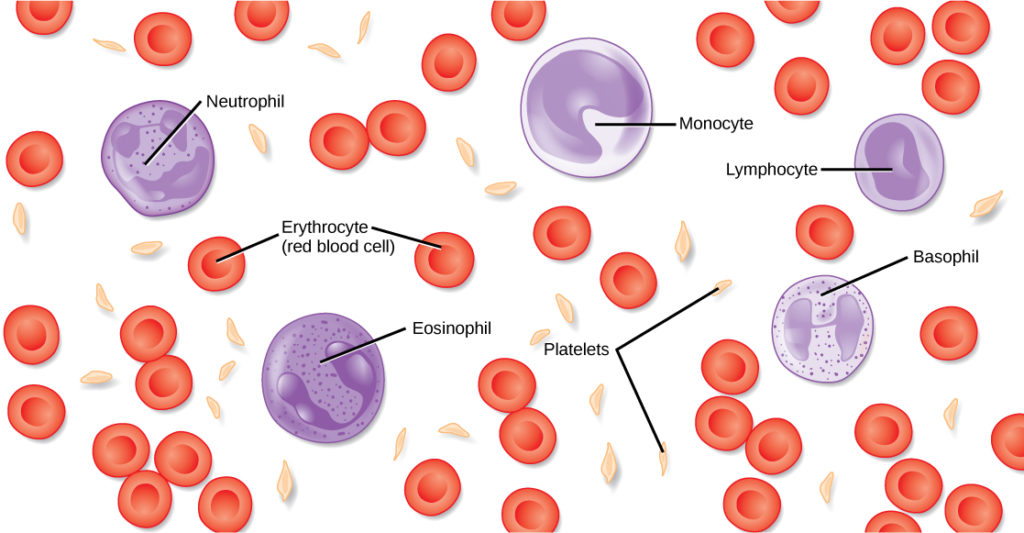Learning Outcomes
- Identify the role of blood in the body
Blood, like the human blood illustrated in Figure 1 is important for regulation of the body’s systems and homeostasis. Blood helps maintain homeostasis by stabilizing pH, temperature, osmotic pressure, and by eliminating excess heat. Blood supports growth by distributing nutrients and hormones, and by removing waste. Red blood cells contain hemoglobin, which binds oxygen. These cells deliver oxygen to the cells and remove carbon dioxide.
Blood plays a protective role by transporting clotting factors and platelets to prevent blood loss after injury. Blood also transports the disease-fighting agents white blood cells to sites of infection. These cells—including neutrophils, monocytes, lymphocytes, eosinophils, and basophils—are involved in the immune response.

Figure 1. The cells and cellular components of human blood are shown.
Try It
